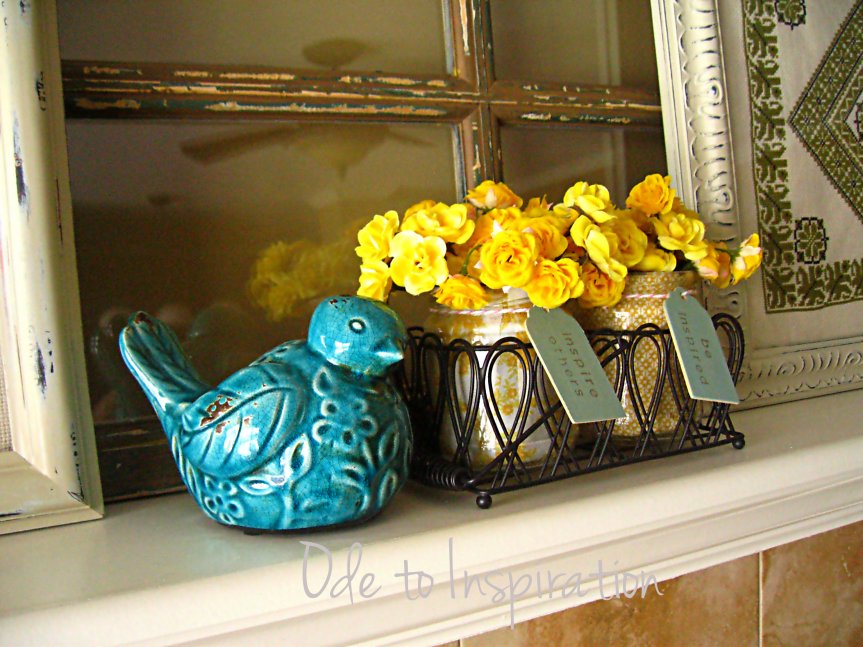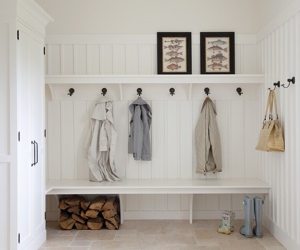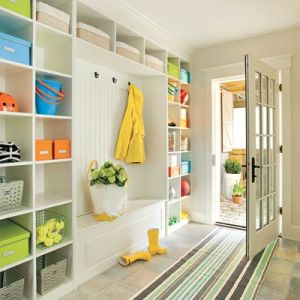6 ways to include healthier environments in your wellness journey
In my persuit of healthier living, which began with a personal realization that I “did not feel well” far too often, I found that every element of my life was saturated with toxic chemicals. I started with a detox diet, then edited my daily diet and started practicing yoga again. I found I felt better after taking these steps but I knew there could be more I could do to feel even better. I took a look around my home and realized that the source of alot of my stress was the clutter around me and the possible toxins all this stuff was shedding.
It is a challenge to avoid the toxins being dumped on us in every respect of our lives. There is a substantial list of sources of toxins in our environment. Unhealthy chemicals are present in our air, water, food, building materials, medicines, clothing and more. Even people and stressful situations can be bad for our bodies. Practically every element of our lives is touched by over 80,000 “legal” chemicals.
Even our pets and creatures of the wilderness are affected by our use of chemicals. Honey bees for example, which our flowering crops depend on for production, are mysteriously dying off. The reason, discovered by bee keepers, the spraying of herbicides (glysophates) such as Monsanto’s popular product Round-Up… but that’s a whole other topic for future articles.
We don’t live in a bubble and can not possibly hide ourselves from all the toxic substances floating around our environment, but riding our lives of the troubling “low hanging fruit” can be acheived gradually if you have time… or go for the total Detox with “Chemical Cold-turkey”. Here are six areas in which we can make changes that will make a difference to the health of our bodies and to the environment.
1. Choose natural, organic and ethical fabrics. Why? Textiles such as nylon are produced using fosil fuels which impact greatly on the Earth’s environment. These chemical based fabrics also contain endocrine disrupting toxins such as BPA and thalates. Choosing organic cotton over standard cotton is important because the production of cotton is one the largest users of toxic herbicides and pesticides and thus polluters of our water system. Most of the cotton crops from Indian are a GMO (genetically modified organism) crop called BT Cotton. BT Cotton in India has recently been exposed as the reason for the mass suicides of poor cotton farmers. Another productive fibre, hemp (Cannabis Sativa L) is considered a “carbon negative” material. Naturally organic, it grows quickly without the usual chemicals, less water than crops such as cotton and higher yields per acre. Canada has a controlled production of hemp crops and several states in the USA have recently made hemp production legal again. I could write a long essay on this topic alone. Silk, wool, linen (flax) and ramie (nettle) are other classic natural fabrics, used for centuries all over the world. Look for the label of the organic textiles organization OEKO-TEX® on your purchases to ensure you are getting a certified sustainable textile product.
2. Re-upholster or slip-cover your gently used quality sofas and arm chairs. Why? Upholstered furniture sold at department stores is almost always treated with toxic fire retardants. Studies have shown that Brominated Flame Retardants (BFR) and more specifically Polybrominated Diphenyl Ethers (PBDEs) are “chemicals (that) may disrupt human thyroid hormone functioning and cause other health effects, prompting many nations to ban or suspend their use in new consumer goods”(1). These bio-accumulative toxins store in our fatty tissue (such as breast tissue and waist line) and contribute to our suseptibility to cancers. PBDE are found in household things such as sofas, rugs and electronics and leaches out in the form of household dust (5). Perfluorinated Compounds (PFCs) trade names like Stainmaster and Teflon are use as stain guards added to textiles are considered toxic and possible causes of birth defects, developmental problems, hormone disruptor and “likely carcinogen” (6) Wool is the most naturally fire resistant natural textile. When you purchase soft furnishings from your favourite retailer, if you can choose the fabric, ask if it is treated with a fire retardant and stain repellant. If available and guaranteed for long-wear, choose organic and sustainable fabrics that can be washed since dry-cleaning is another toxic source called Perchlorethylene (PERC) an is a known carcinogen. Don’t take the retailers verbal assurance that there are no toxins… ask for the specifications and organic textile association to be certain you are getting what you are paying for.
3. Choose no VOC paints, varishes, solvents, furniture, wall coverings & flooring. Why? Anything in your home that has glue, paint, varnish or made of plastic emits VOC (volitile organic chemicals). VOCs can cause allergic reactions and respirtory illness. Prolonged exposure has been linked with liver and kidney diseases, cancer, as well as autoimmune diseases like Multiple Sclerosis (MS) and neurodegenerative conditions such as Parkinsons Disease (PD) (7). Formaldehyde is a cancer causing chemical found in mass produced furniture with particle board and melamine. A healthier solution is to re-purpose antiques or purchase quality solid wood furniture (that have a no VOC guarantee) and if you need to re-finish use no VOC paint, varnish and cleaning solvents. Always refinish in well ventilated space, outdoors is prefered and dispose of the remaining products at proper recycling and hazardous waste facilities. Don’t dump anything down the drain… it is still a toxic chemical!! Replace old wall-to-wall carpet and pealing vinyl flooring with factory finished, water-based varnish on solid hardwood flooring and ceramic tiles. Not only will this type of flooring not have the dangerous toxic dust production but you will be able to better clean these solid surface floors. Little ones who live closest to the ground will benefit from the cleaner air. Add natural fiber area rugs to make a softer zone for your crawler, in materials such as wool or cotton. Wet or areas of your home with more traffic would benefit from durable jute. Think about the cleaning product you use too!! Products with perfumes are another source of harmful VOCs. Read the labels on everything since infants are especially at risk from toxic compounds as thier immune and respitory systems are newly developing and ill and elderly family members may have weak immune systems.
4. What’s lurking behind those walls? Why? Older homes and those that are less-than-loved may be hiding toxins such as mold and mildew, asbestos and led paint for example. Be aware that any renovation project on buildings with a mysterious history should be conducted with care and that specially trained professionals may be needed to handle your mold or asbestos issues, so as not to release dangerous toxins into your environment. Disrupting aged materials can cause respitory illnesses or worse, birth defects if an expectant mother is exposed. Leave your home while work is being done and allow it to be aired out for several days after the work is complete. Renovation projects are an ideal time to add sustainable and energy efficient building techniques, materials and products to your home. Be vigilant and protect your family, pets and your property by hiring a qualified building professional.
5. Open the windows!! Why? Especially in our extreme seasons, the quality of the air in our interiors declines. Modern air tight buildings offer little fresh air flow and often the re-circulated mechanical air is pushed through dirty filters and vents… commercial buildings are the worst but your home may be making you suffer too. Plan to have your vents cleaned at least once a year and change your furnace filter as well, especially after any renovations. This will help keep mold, mildew, toxic off-gassing of new furniture and finishes as well as keeping those nasty VOCs (volitile organic compounds found in paints, varishes and more) at bay. Opt for fresh air not phthalate ladden air-fresheners. A breath of fresh air is very cleansing to your body… just opening your windows may not be enough… get outside and into nature… take a deep breath… relax, smile and take care of yourself.
6. Too much stuff!! Why? Visual clutter is mental clutter. You don’t have to live a minimalist’s lifestyle to rid yourself of the mental anguish of too much stuff, but making your home more organized and editing the things you have is a good start. My mom, for example has piles and drawers full of video tapes but doesn’t have a VCR anymore… this creates the stress of dusting off things she will never use again (although, she claims she “needs” them!!). Stress has a negative physiological effect on your body…. and stress manifests itself differently in everyone. Having too much stuff in one space can seem out of control, cluttered, confusing. Organizing spaces such as closets and kitchens can make the process of getting dressed and cooking a meal alot more efficient and enjoyable!! Visitors to your home will also appreciate a calm and uncluttered space. The task of editing your home, if you’ve never done it before, can be absolutely daunting. Start with a small space and don’t get frustrated. Make piles of things to go to storage, give-away, re-cycle and trash. If you can’t do it because sometimes it is just too emotionally difficult or physically challenging, recruit someone you trust who will listen to your desires. They will also help you make the hard decisions of getting rid of things you don’t need but are attached to. De-cluttering is like therapy really, you have to be ready for it… otherwise it won’t be successful. Editing or decluttering your possesions can be a mentally freeing, although many have a difficult time letting go of sentimental items, the act of editing is definitely an emotional one… but the result is freedom!!
We spend so much time and money removing toxins from our bodies with organic food, vitamins and de-tox baths where we should also be mindful of the toxins in our envionment that we have control of. Being aware of and taking care of our environment is a benefit to us and future generations too. Take care of what you can and remind yourself not to not stress over what you can’t control in the environment. The world is stressful enough… we don’t need to add to it.
1. http://www.ec.gc.ca/ese-ees/default.asp?lang=EnHYPERLINK “http://www.ec.gc.ca/ese-ees/default.asp?lang=En&n=05DF7A37-1″&HYPERLINK “http://www.ec.gc.ca/ese-ees/default.asp?lang=En&n=05DF7A37-1″n=05DF7A37-1
2. http://www.ncbi.nlm.nih.gov/pmc/articles/PMC2367656/
3. https://www.oeko-tex.com/en/manufacturers/philosophy/phylosophy_start.html
4. http://www.global-standard.org/the-standard/general-description.html
5. Smith, Rick “Slow Death By Rubber Duck – How the toxic chemistry of everyday life affects our health”, Toronto: Alfred A.Knopf Canada, 2009 (page 96-130)
6. Smith, Rick “Slow Death By Rubber Duck – How the toxic chemistry of everyday life affects our health”, Toronto: Alfred A.Knopf Canada, 2009 (page 69-95) (http://slowdeathbyrubberduck.com/CAN/)
7. http://www.ncbi.nlm.nih.gov/pmc/articles/PMC2078137/




